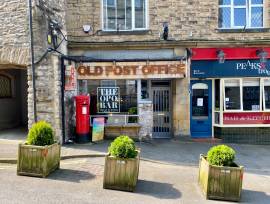Focus East Anglia: Drinks brand profile
If you drive through the village of Debenham, only a few miles from the Suffolk town of Stowmarket, you will eventually see a sign pointing towards Aspall Hall - the home of Aspall cider.
As you wind through the grounds towards the stunning country house that is Aspall Hall (where cider has been produced since the 18th century), you come upon a sign that simply reads: 'Beware of the Rottweiler'.
Perhaps they are hiding a 100-year-old secret of how to make great cider and guard dogs are needed to protect it?
Sadly such outlandish fantasies are quashed when Henry Chevallier-Guild, who is director of Aspall along with his brother Barry, informs me that the rottweilers are long gone - "we just never got round to taking down the sign," he says.
In hindsight, this is no surprise, for the Chevallier-Guilds have been busy. Along with many other cider brands, Aspall has been enjoying great recent success. According to Henry, the cider market as a whole is enjoying 28 per cent growth - Aspall's growth, he says, is "significantly higher than that".
Basking in the glow of the Magners effect, Aspall, which sells at a much higher price point (and makes absolutely no mention of ice!) has won listings with Punch Taverns and Mitchells & Butlers, as well as regional companies such as Heavitree and Ringwood, in the past 12 months alone.
With his family business steeped in the traditions of cider, you might think Henry would turn his nose up at the recent cider boom - with its pint bottles, flashy advertising and over-ice serves. Not a bit of it.
"Magners has made it socially acceptable to drink cider again and that is a job the brand has done for all cider makers," he says. "Cider is now a much easier sell to the industry than it has been for such a long time."
But while many observers may think Aspall owes its current success to Magners, it has in fact been enjoying steady growth since the turn of the millennium.
Henry and Barry relaunched the Aspall cider brand in 1999, the first big step they had taken in the business after taking it over from their father John in the early 1990s. John had come into the family business in 1970. With cider sales looking dicey he decided to diversify the business and sold organic apple juice as well as vinegar.
However, when it came to John's sons entering the business, after spells working in industries ranging from brewing to cars, the brothers were hugely keen to re-establish the family's position as great cider makers.
"Barry and I wanted to go back to our roots," says Henry. "So we spent several years playing around with blends to find out what would appeal to our core consumer."
Henry doesn't believe there is any great secret to where Aspall goes from here, and he believes this model for business is completely sustainable.
"We will be successful as long as we don't compromise and don't fall into the trap of our eyes getting bigger than our stomach," he says. "It is very flattering to have people tell you we should go national. But sustainability is not based on that. Our plan is not for five years, it is for 25 years."














